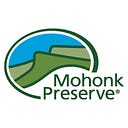Research Report #11 — Frost Curls
For many years scientists and naturalists have been studying and observing the flora and fauna of the Shawangunk Ridge. Foremost among them was Daniel Smiley, for whom Mohonk Preserve’s Daniel Smiley Research Center is named. Dan wrote numerous reports summarizing his observations on various topics. This regularly occurring series will feature some of these reports; some hold tremendous scientific value today and just await an interested researcher to follow up, others showcase a quirky sense of humor or highlight an oddity of nature.
Read the report: “Frost Curls.” January 1977. Daniel Smiley.
A note from Paul C. Huth, Director of Research Emeritus:
In 1916, a quote from John Burroughs, in the Preface of Under the Apple-Trees, captures the essence of what being a naturalist really is — “Natural history is a matter of observation; it is the harvest which you gather when and where you find it growing.”
From a young age growing up at Mohonk, Daniel Smiley Jr. was “strongly influenced by exposure to the outdoors and interrelationships of nature….” He developed a strong “self-discipline,” which included a life long interest in taking detailed observational notes of natural and cultural history. He once said, “it seemed right for me to write down data. It seemed right to record it, and right to make connections between things interrelated.” So, on the cold morning of 25 November 1966, while on a walk from his home, The Elms Cottage, up to the Mohonk Mountain House, he observed “several extrusions of ice from the lower stems of dead plants,” and made a note for future reference. He did not record on what species of plant they were seen.
Dan first saw an article mentioning what he called “frost curls” in the December 1973 issue of BioScience, where the caption of a photograph taken in Texas, showing “strings of ice crystals….from minute openings or cracks in the skin of the lower twelve inches or less of the plant stem.”
The next time Dan saw frost curls was on 28 October 1976, again near his home at Mohonk. Exiting his vehicle after an autumn color survey, he and an assistant noticed frost curls on the stems of White Snakeroot, Eupatorium rugosum. The ice curls measured up to 1 inch horizontally and 4 inches vertically, and were noted on some 111 stems, and as he reports, there could have been more. Later, in early November, on cold mornings, ice curls were again noted on plants where they had been seen previously, and on coarse-stemmed plants like Horsebalm, Collinsonia canadensis, White Snakeroot, and Purple Loosestrife, Lythrum salacaria. These, and later November observations led to the Research Report — “Frost Curls.”
In his summary, Dan noted that he felt “frost curls probably occur regularly on certain kinds of plants through the late fall, but are not noticed because they are close to the ground on cold mornings!” He goes on to say that he thinks “hollow stems are essential. What makes the curl protrude, or ice build up in the stem at a certain height in the stalk is most puzzling. A search of references available here has produced nothing on frost curls.”
In an later attachment to the draft Research Report, Dan discovered an article in a 1938 “Torreya”, reporting on “….wings or ribbons of ice on the lower parts of stems during cold nights,” in Alabama!
Since this Research Report was written, I have seen frost curls appear occasionally on cold November mornings, especially on White Snakeroot, a plant which has now become more widespread.
The “Draft” report, while corrected, was apparently never issued in final form. It appears here in its Draft form.
Read the report: “Frost Curls.” January 1977. Daniel Smiley.
